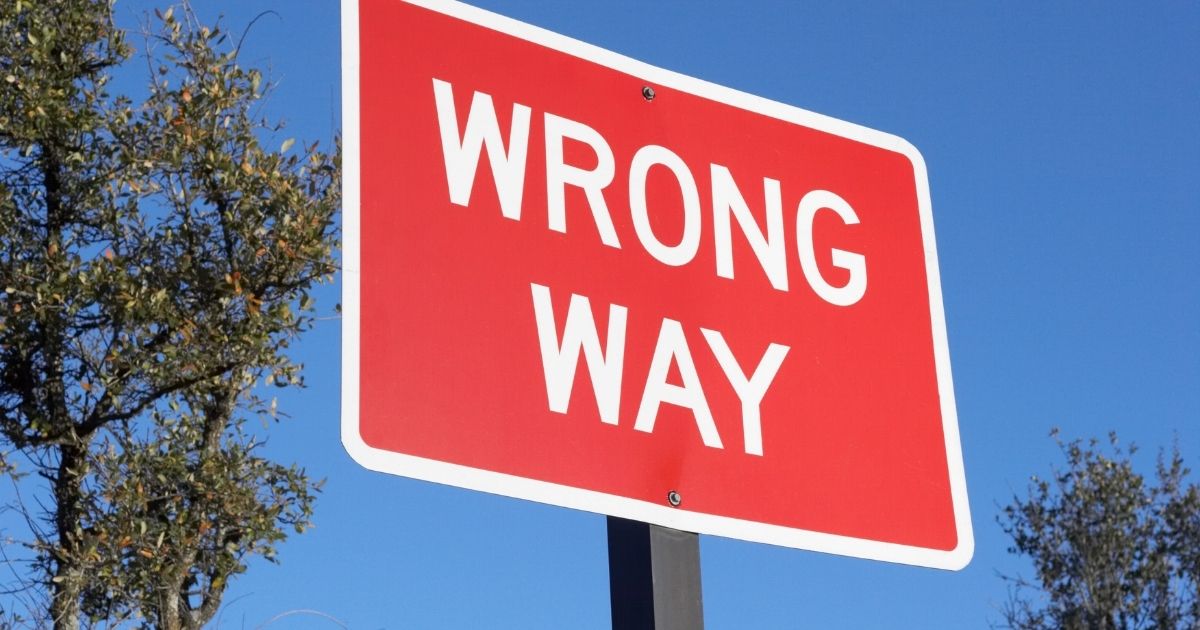MENU
- Home
- Overview
- Attorneys
- Practice Areas
- Firm News
- Blog
- Contact

Wrong-way driving may not be a top leading cause of car accidents, but when these crashes occur, they are likely to involve catastrophic injuries or fatalities. When a motorist drives the wrong way, the chance of a head-on collision is high. Even on one-way streets or roadway access ramps, driving the wrong way creates an incredibly dangerous situation for all involved.
A study by the American Automobile Association (AAA) Foundation for Traffic Safety reported that in March 2021, wrong-way driving fatalities increased. The data shows that from 2004 to 2009, deaths in wrong-way driving accidents averaged about 360 per year. That figure rose to 430 per year on average from 2010 to 2019.
Wrong-way driving occurs when a motorist enters a roadway going in the opposite direction of traffic. This can be on a one-way street, but in its most dangerous form, wrong-way driving happens on high-speed freeways. When a driver on a divided highway is faced with headlights coming at them, it can be traumatic and extremely dangerous. Oftentimes, however, the wrong-way driver may not be aware of the danger until it is too late.
Motorists should learn about the common causes of wrong-way collisions to prevent them from happening. Common causes of wrong-way driving collisions are listed below.
The most common cause of wrong-way driving is driver intoxication. Drivers impaired by alcohol are most often involved in these accidents, but drugged driving is also a frequent cause. The AAA claims that six in ten wrong-way accidents involve intoxicated drivers. In fact, the AAA also found that 60.1 percent of wrong-way drivers in fatal crashes were driving while drunk.
Young adults are much more likely to engage in dangerous wrong-way driving, according to AAA data. These younger drivers are also more likely to be driving drunk than older wrong-way drivers. A National Transportation Safety Board (NTSB) report revealed that out of the wrong-way drivers involved in the study, 65 percent of motorists who were 20 to 39 years old were over the legal limit.
Older drivers are also associated with increased instances of wrong-way driving. Despite the fact that motorists in this demographic generally drive fewer miles overall, drivers over 70 years old had an increased risk of wrong-way driving. Possible reasons for this may have to do with age-related conditions, like poor eyesight.
Another significant factor that showed up in wrong-way driving accidents is driving alone. When someone else is in the car, the driver is more likely to be alerted to the fact that they are driving the wrong way.
In instances where the driver’s behavior can be determined, one factor that has been linked to wrong-way driving accidents is erroneously entering a highway at the exit ramp. Wrong-way driving is not always a mistake. Sometimes, these accidents are caused by drivers who intentionally make an illegal turn or use an emergency route to cross the median strip on a divided highway.
Sometimes, road markings or signs are missing or obscured. Often, drivers can become confused by a poorly designed road. These factors may lead to wrong-way driving accidents.
A 2015 survey of 400 participants at the University of Central Florida found that people were aware of the dangers of wrong-way driving, but they often did not report wrong-way driving incidents. Only about 10 percent of those who directly witnessed a wrong-way driving event reported it to authorities, even though they admitted to feeling endangered by the encounter.
To address some of the age-related factors, driving courses for new drivers and refresher courses for older drivers might help. Also, initiatives to prevent drunk driving, such as an increase in sobriety checkpoints and programs to mandate Ignition interlock systems for repeat offenders, should reduce instances of wrong-way driving as well.
The AAA and the NTSB suggest that states install warnings to alert drivers when they are driving the wrong way. The California Department of Transportation and the University of California-Davis released a joint study that showed a 44 percent reduction in wrong-way driving when red reflective road markers were installed. There were 60 percent fewer accidents that occurred when flashing LED lights were used.
The Florida Department of Transportation has installed vehicle detectors that use radar and video cameras that set off rapid flashing beacons and LED warning signs to alert drivers that they are going the wrong way. Images from the closed-circuit cameras are able to be sent to a traffic authority that can respond. Researchers are seeing that these measures reduce wrong-way driving by approximately 80 percent.
Wrong-way driving accidents are dangerous, and studies suggest that they may be becoming more frequent. If you were hurt in a wrong-way traffic collision, a dedicated Wilmington car accident lawyer at Jacobs & Crumplar, P.A. can help you identify the liability party and will fight for your rights. Call us at 302-656-5445 or contact us online for a free consultation. Located in Wilmington and Millsboro, Delaware, we represent clients throughout Dover, New Castle County, and Sussex County.